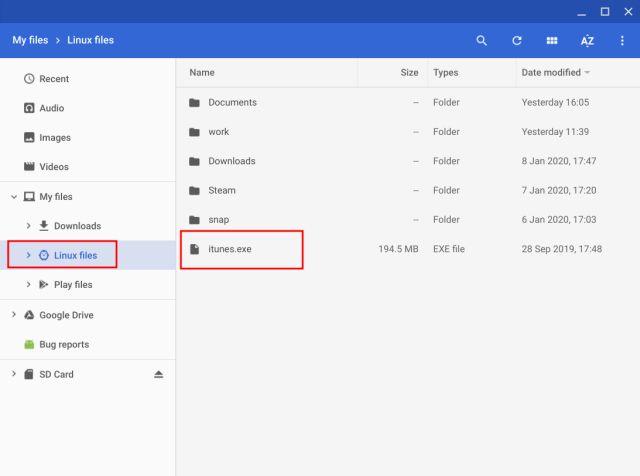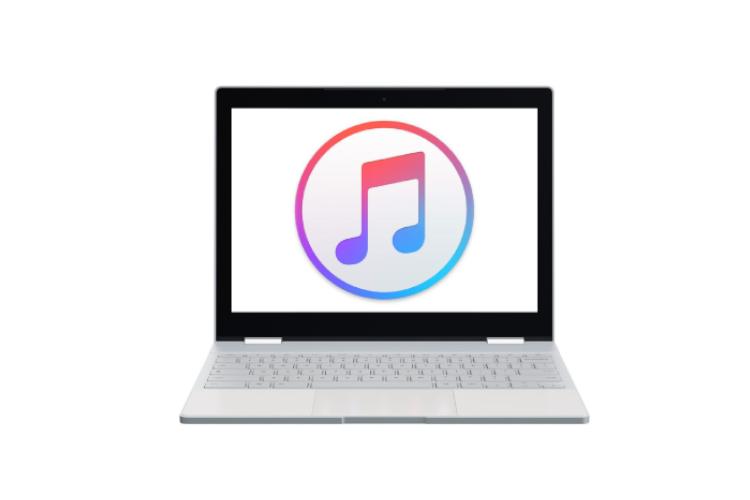
How to install iTunes on Chromebook in 2022
If you have most of your music or preferences stored in an iTunes library but also have a Chromebook, you may find it useful to learn how to install iTunes on a Chromebook. It’s not a native option for Chrome OS. Apple simply doesn’t have a version of iTunes available for the platform. The good news is that, with a little work, you can find a workaround using a Linux-powered version of the Windows iTunes app. Here's what to do!
Moderate1 hourContentsIf you don't have an iTunes account, you'll need to set one up before trying to install it on a Chromebook.
Enable Linux support
First, you need to make sure your Chromebook has made space for Linux.
Step 1: You can start this process by going to Quick Settings, the icon tray at the bottom-right of the home screen. In the window that pops up, choose the Advanced option.
Step 2: Find and select the Developers category.
Step 3: Select Turn On to install Linux, and follow the on-screen instructions. We know this may feel a bit tricky for some users, so we have a full guide on installing Linux on a Chromebook and everything you need to know — we highly suggest taking a look at it before moving on. Make a special note of the username you pick, as this will be an important part of file paths later on.
Step 4: Make sure your version of Linux is fully updated. If there is no dedicated option for updating, you can always open your Linux terminal and paste in:
sudo apt update && sudo apt upgrade -y
That will start the update.
Enable 32-bit support with Wine
Linux is on your Chromebook, but not quite ready for the iTunes app. First, you need to enable support for 32-bit software, which requires a very specific update. Don’t worry, a bit more copying and pasting is all it will take.
Step 1: If you haven’t already, open your Linux terminal up and get ready for some commands. First, paste in and execute:
sudo apt-get install wine
followed by pasting in:
sudo dpkg –add-architecture i386

to complete the Wine installation. As always, watch for any errors that indicate you may need to paste the command again with careful attention to every character.
Step 2: Now Wine is ready to be upgraded to its 32-bit version, paving the way for iTunes. Here again, you will need to paste in and execute two important commands. The first is:
sudo apt update
When that command has been run, paste in:
sudo apt-get install wine32
Now you should be ready to go.
Initiate iTunes setup
Step 1: You’ll want to update Wine one more time now that you’re working with 32-bit support, so again paste and run the command:
sudo apt update
Step 2: For this next command, pasting it directly into the terminal is a little difficult, because you’ll want to substitute the section “username” with your actual Linux username that you entered during setup. You may want to paste the line somewhere first, then manually add in your username before copying it again:
WINEARCH=win32 WINEPREFIX=/home/username/.wine32/ wine iTunesSetup.exe
Step 3: You’ll probably get a pop-up to enable features required to install iTunes, so confirm them and wait for iTunes to finish installing. A “Congratulations!” pop-up should indicate that the job is done.
Correct the iTunes file path
iTunes is now on your Chromebook, and you will be able to see its icon in your app window. But don’t launch it quite yet! The file path that iTunes downloaded with isn’t quite right, so your Chromebook won’t be able to locate the app until you change it to the correct, Wine/Linux-friendly version.
Step 1: First, find your new iTunes file. Head to My Files and go to* Linux Files*. Now, look to the Three-Dot icon at the top-right of the window and select it. Go down to Show Hidden Files and select this to make sure you can navigate correctly.
Step 2: Under your Linux files menu on the left, you should see the option to choose your Local folder. Choose it, then select Share > Applications > Wine > Programs > iTunes.
Step 3: Right-click on the iTunes file, and choose the option to Open With Text.
Step 4: In the text file, look for line three that begins with “Exec” and shows a file path. You are going to want to replace this file path without touching anything else in the text file. Replace it with this text, substituting “username” with your own Linux username once more:
Exec=env WINEPREFIX=”/home/username/.wine32″ wine “/home/username/.wine32/drive_c/Program Files/iTunes/iTunes.exe”
Save and close the file when you’re done.
Launch iTunes and sign in
All right, now you should be done. Open your app launcher and select iTunes to begin. Sign in with your Apple information, and you should be able to use iTunes as normal. Keep in mind that you’ll have to keep everything updated as time passes so this little workaround keeps on functioning.
Just want to use Apple Music?
If you don’t really have an iTunes library but do subscribe to Apple Music, you’re in luck! Apple Music does have native Android support, which makes everything much easier.
You can just go to the Apple Music app on the Google Play store and download it. Or, if you don’t want to use an extra app, you can head over to the web app version of Apple Music for the same result.
}})